Discover the best Lagoons in mainland Portugal
On warmer days, venturing into the Lagoons in Portugal is an option to consider for those who enjoy nature, photography, birdwatching or walking outdoors. How about a swim? You will not be able to resist.
Summer is synonymous with heat and good weather, ideal conditions to discover the best Lagoons in mainland Portugal. Natural or artificial, there are idyllic spaces with large mirrors of water that delight the fans of hiking, bird watching or nature photography. All About Portugal has prepared an unmissable itinerary so you can experience the most beautiful lagoons, from Minho to the Algarve, whether on holiday or whenever you yearn for tranquillity.
Lagoons of Bertiandos e São Pedro d'Arcos, Ponte de Lima
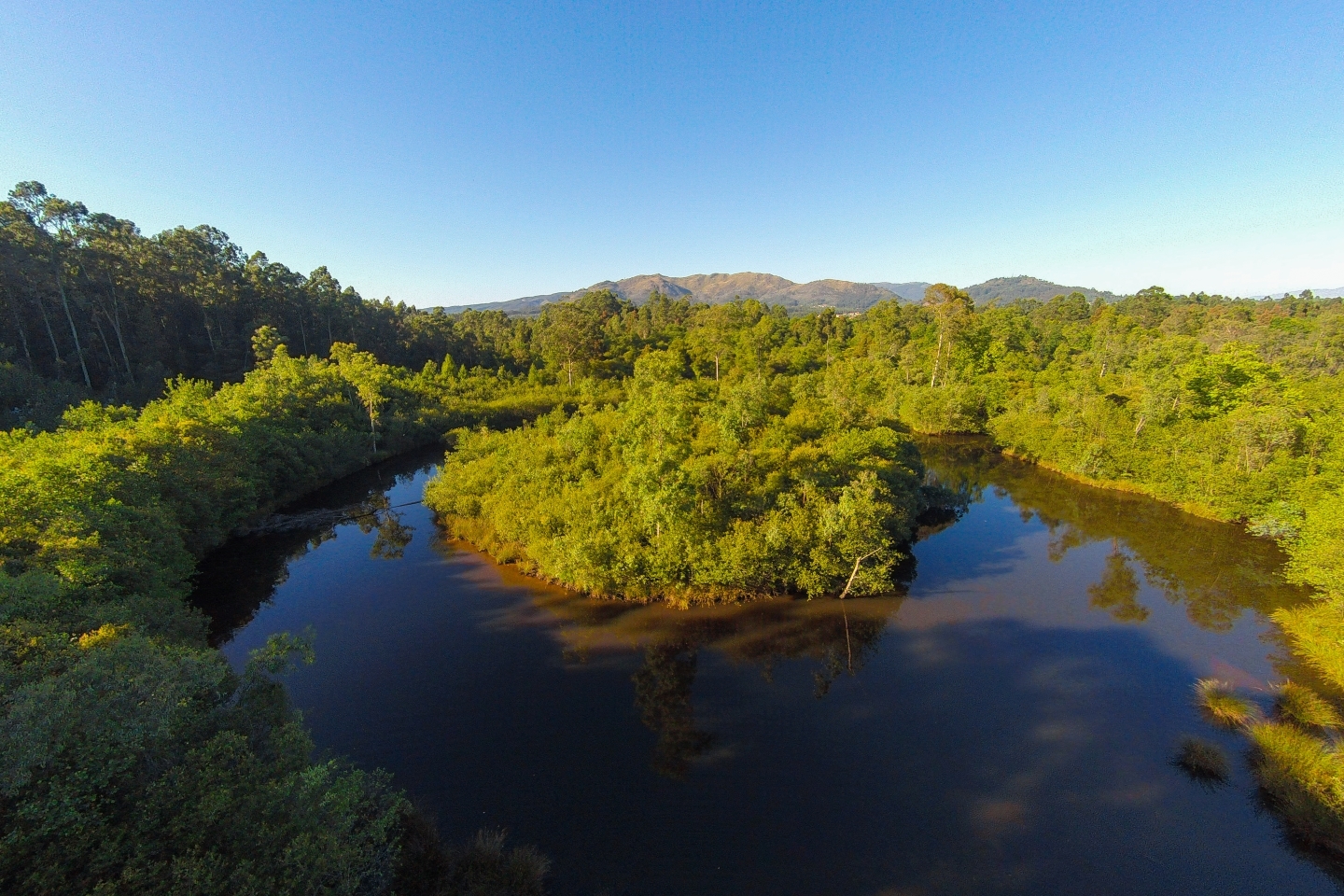
These Minho lagoons are a Protected Area and congregate a diversity of habitats, which include humid and non-humid areas, forests, pastures, and agricultural areas. They stretch over a permanent lake system, served by natural channels, and crossed by the Estorãos River. The combination of trees such as alders, oaks and willows in wetlands leads to this being an area with excellent feeding conditions, serving as refuge for several species of fauna and flora. There are about 80 plant species registered as rare, and it is the only classified wetland in the North of Portugal.
The Paramos Lagoon, Espinho
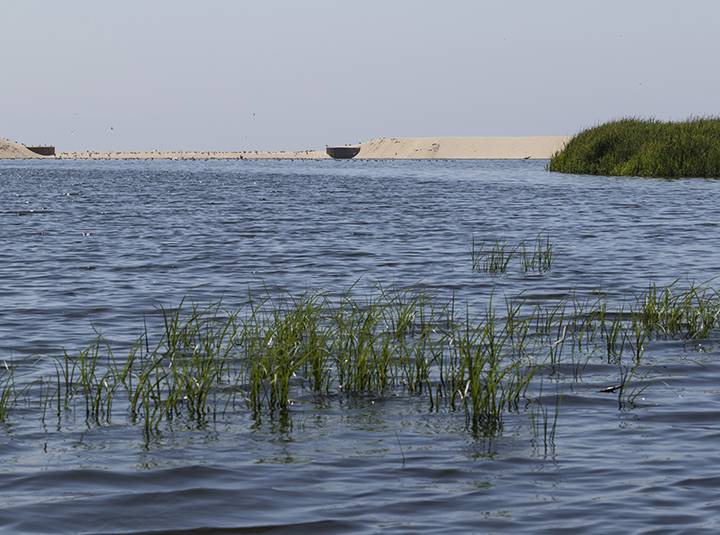
Also known as Barrinha de Esmoriz, this medium-sized coastal lagoon is divided between the municipalities of Ovar and Espinho. Part of the Natura 2000 Network, it is considered unique along the north coast and is among the most beautiful lagoons in the country. It is surrounded by arboreal and palustrine vegetation and is classified as IBA - Important Bird and Biodiversity Area, welcoming a remarkable diversity of bird species, with regular or occasional appearance. It is an excellent area for nature and bird photography and for walks, with about six kilometres of walkways.
The Comprida Lagoon, Seia

A few kilometres from Torre (in Serra da Estrela), the highest point of mainland Portugal, this is the largest of the lagoons of the upper massif and which impresses with the architecture of the dam structure that supports it, especially its 28 metres wall. It was born from a natural lagoon and is the main water reservoir of Serra da Estrela. On one side of the lagoon, it is possible to observe one of the largest fields of granite glacial erratics, transported by the glaciers when the melting and retreating of the ice occurred.
Lagoon of Vale do Rossim, Gouveia

Located in the Serra da Estrela Natural Park, this artificial lagoon is extremely popular in the summer, as it is the highest river beach in Portugal, 1437 metres above sea level. It is one of the reservoirs that integrate the hydroelectric system of the region and is much sought-after for the serenity it provides. It has a wide water mirror and an environmental context of excellence. The sunset is also worthy to be enjoyed in this place of great scientific and landscape value, being inserted in the biogenetic reserve of the upper plateau. The practice of water sport is also common.
The Pateira de Fermentelos Lagoon, Águeda

It is one of the largest lagoons in Portugal and the largest natural lagoon in the Iberian Peninsula, also integrating the Natura 2000 Network. It is an unmissable spot for lovers of birdwatching and Nature, given the quantity and diversity of species that choose this area as their habitats. From otters to the Pyrenean desman, fish such as the shad or birds such as sandpipers or the black kite, there are many animals that can be found in this highly sought-after area of Bairrada, that extends through the municipalities of Águeda, Aveiro and Oliveira do Bairro.
The Vela Lagoon, Figueira da Foz
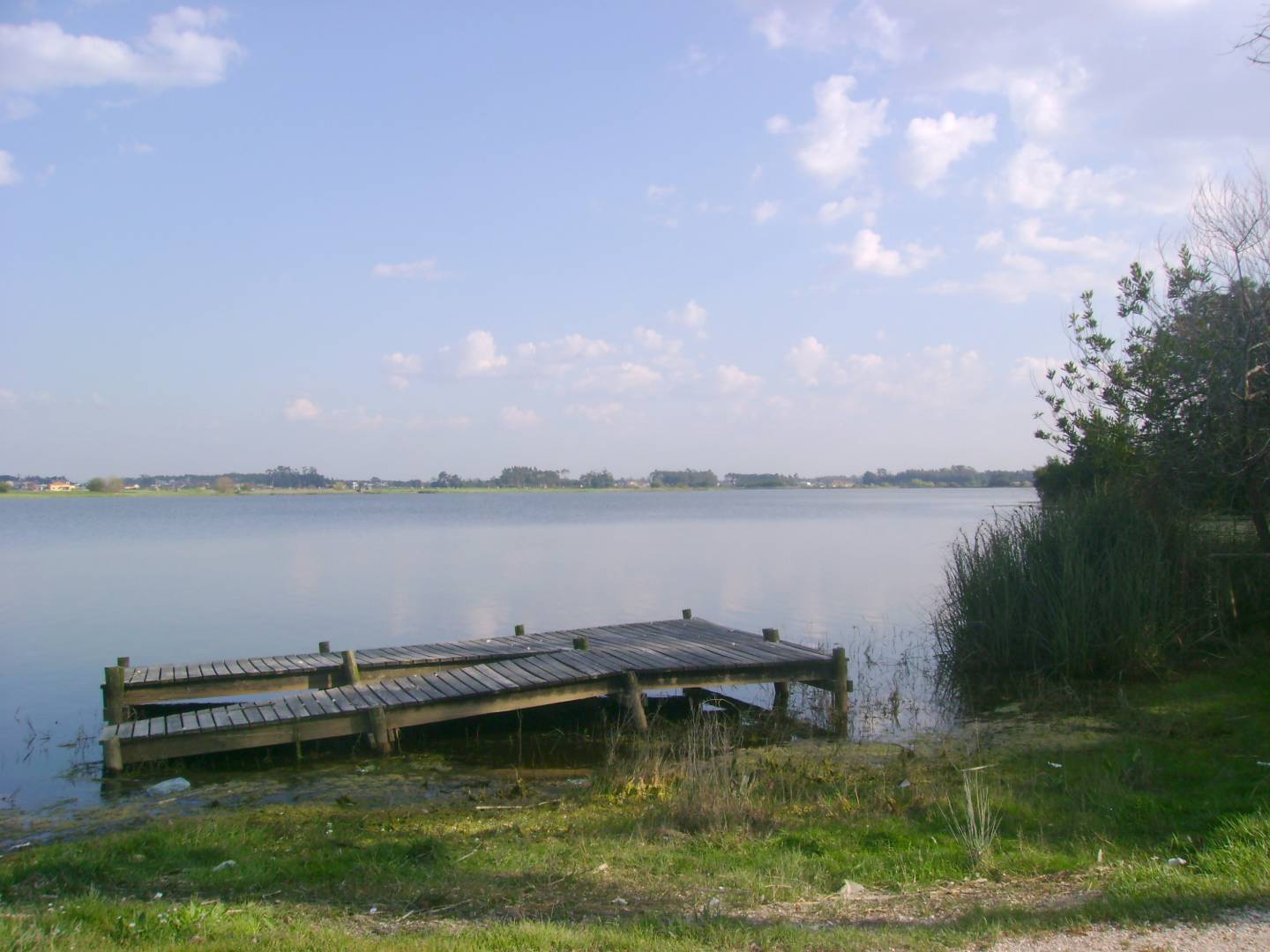
It is the largest and most interesting of three lagoons that can be found north of Figueira da Foz, in the Quiaios area. Here it is possible to observe a considerable number of water birds such as the sandpiper, the little tern, the purple heron, or the grey heron. The common coot and the spoonbill are species usually visible in this area as well. One of the best observation points in this lagoon, immensely popular in the summer months, is found at the south end. It is surrounded by abundant vegetation and has good access.
The Óbidos Lagoon
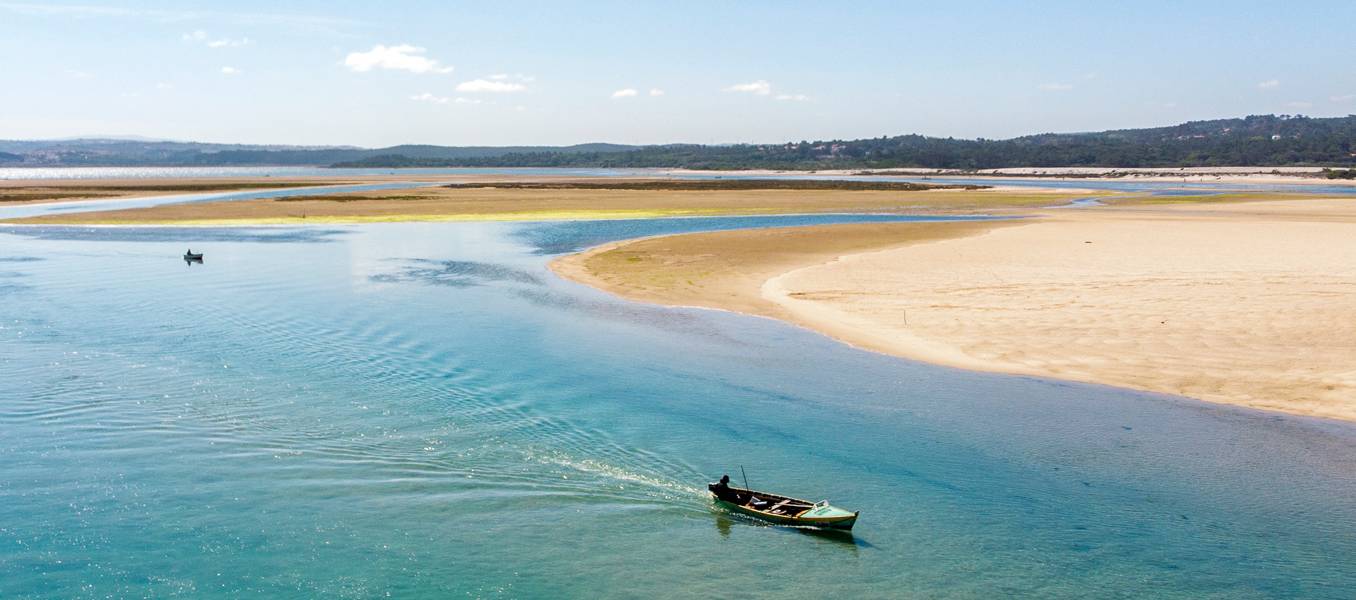
It is a “mandatory” presence among the best lagoons in Portugal, as it is one of the most extensive lagoon systems on the Portuguese coast, occupying an area of seven square kilometres, between the municipalities of Óbidos and Caldas da Rainha. It has a high potential for biodiversity of ecosystems, as well as of flora and fauna species. In addition to the great diversity of birds, the assortment of bivalves assumes a prominent role in the economy of the local population, with emphasis on clams, cockles, and mussels. It is connected to the ocean through a tidal inlet that is maintained artificially.
The Albufeira Lagoon, Sesimbra

For the panoramic views it provides, it is among the most beautiful lagoons in Portugal. It extends over an area of 155 hectares, has an elongated shape and is formed by two lagoon areas. It is part of a dune system and of the Natura 2000 Network, in addition to being classified as a Special Protection Area for birds. It has an Interpretative Space that provides the public with access to one of the most important areas of circulation and nesting of birds in Europe, and that make it an unmissable point in any birdwatching guide in Portugal. The lagoon is, for the most part, surrounded by a pine forest.
The Azul Lagoon, Sintra

This fascinating and refreshing place is located in the heart of the Sintra mountain range, within the Natural Park of Sintra - Cascais, a few kilometres from Lisbon. Ducks, turtles, or fish such as carp and perch can be found in the water. The lagoon is surrounded by an extensive grove and the surroundings are conducive to hiking or mountain biking. The natural and scenic ambience are worthy of appreciation and the flora and fauna is quite diverse. The setting is idyllic and great for relaxing and having a good time, enjoying the tranquillity. Still not very well known, it deserves to be among the best Lagoons in Portugal.
Lagoons of Santo André and of Sancha, Santiago do Cacém
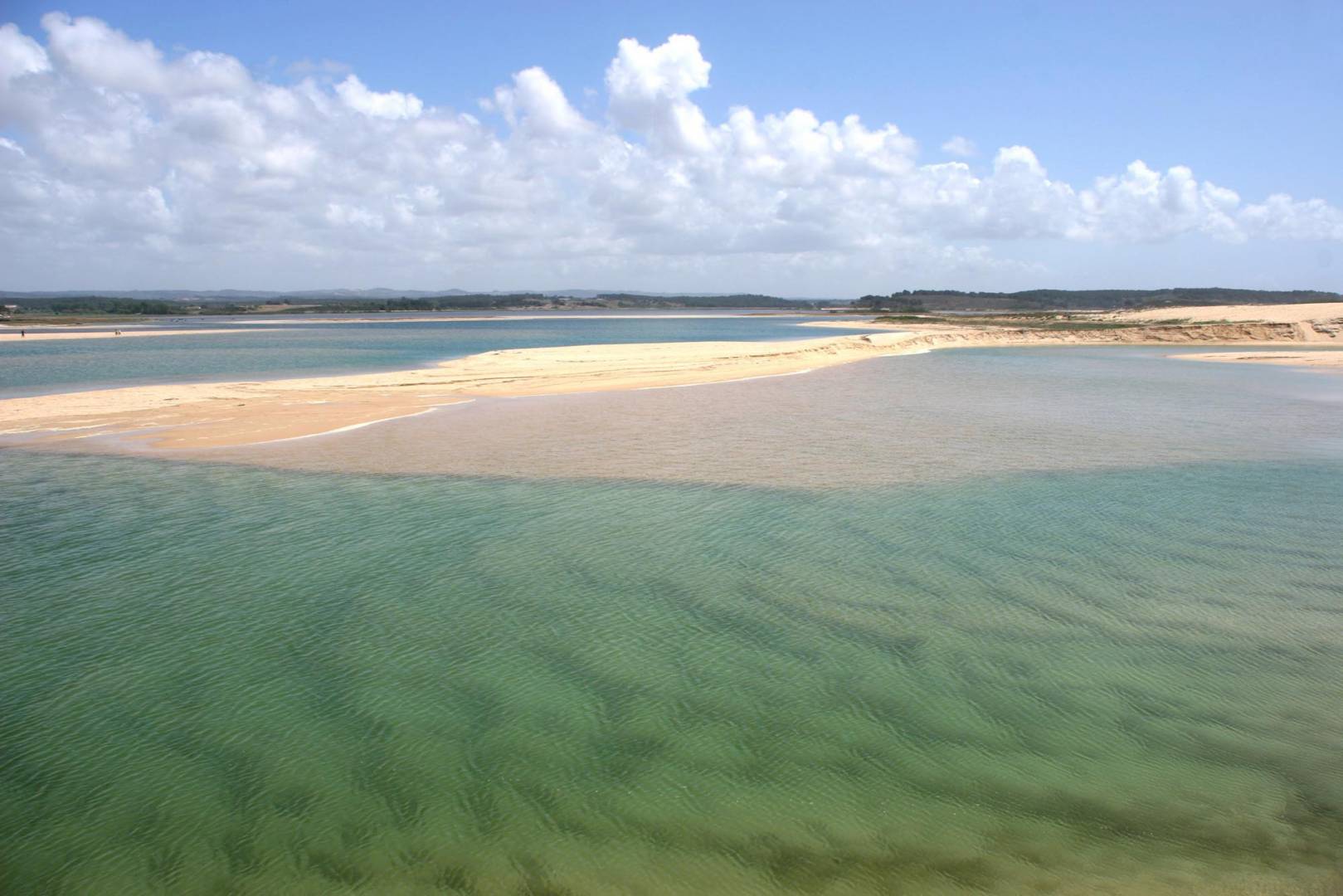
This Nature Reserve extends over 15 kilometres of the coastline of the municipalities of Santiago do Cacém and Sines, constituting a coastal lagoon system of considerable biological, ornithological, fauna and floristic importance. This area plays a crucial role in the nesting, stay and passage of several species of migratory birds and was declared a Special Protection Area for avifauna by the European Community, also integrating the Natura 2000 Network. The surrounding dune complex assumes an important role in the protection of the lagoons, supporting characteristic flora and vegetation, including some endemic species considered to be vulnerable.
The Melides Lagoon, Grândola
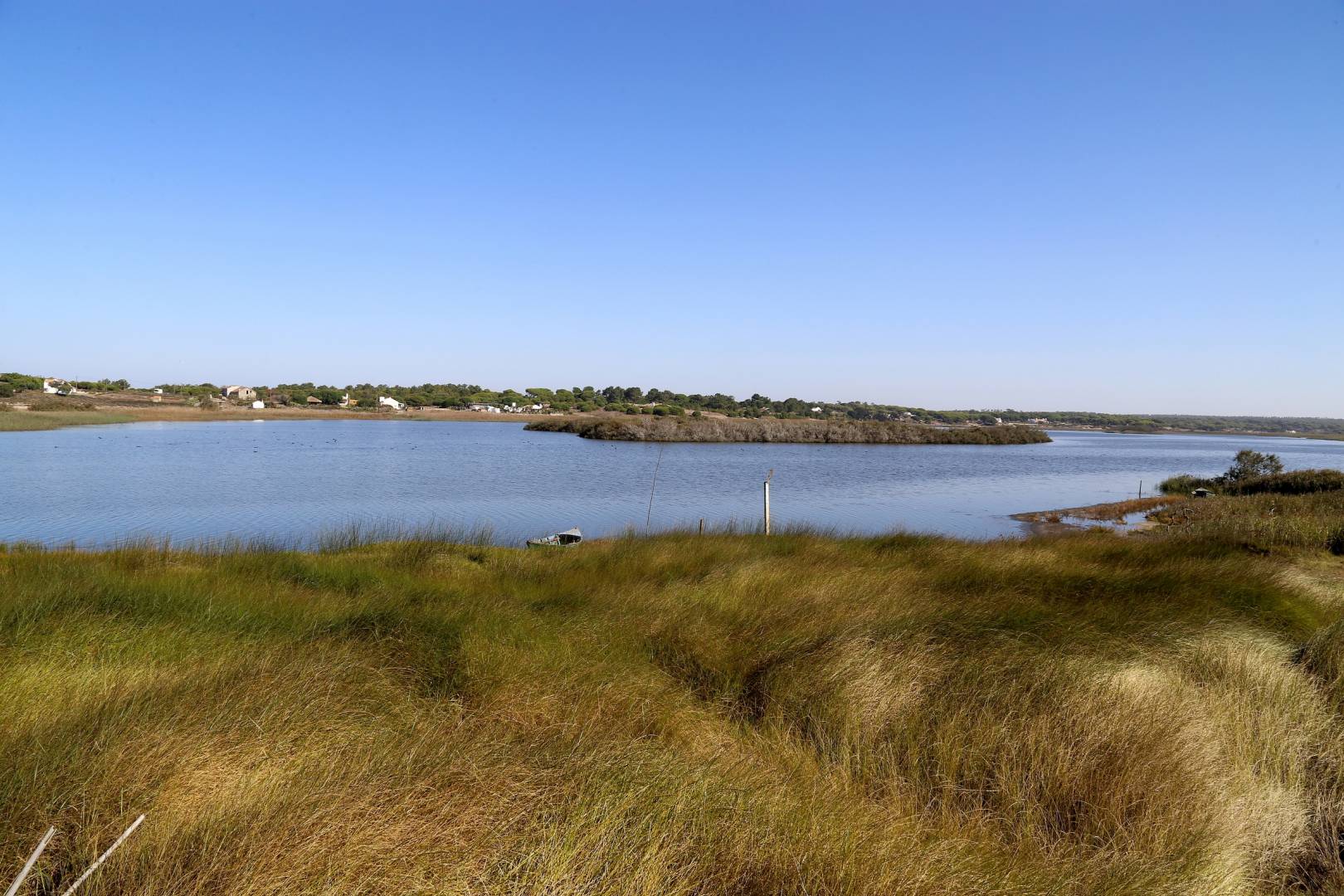
Also located in Alentejo, this lagoon occupies an area of 26 hectares, which includes small islands covered with hydrophilic vegetation. It had a connection with the sea and served as a fishing port until the 18th century, and although no longer serving its former purpose, this lagoon still keeps its charm and ecological function. It is common to see species such as eels, mullets, great egrets and purple herons, or black kites. There are two birdwatching shelters in the Melides Lagoon, which is an important point of residence and passage for migratory birds, with over 180 species spotted at the location.
The Salgados Lagoon, Silves
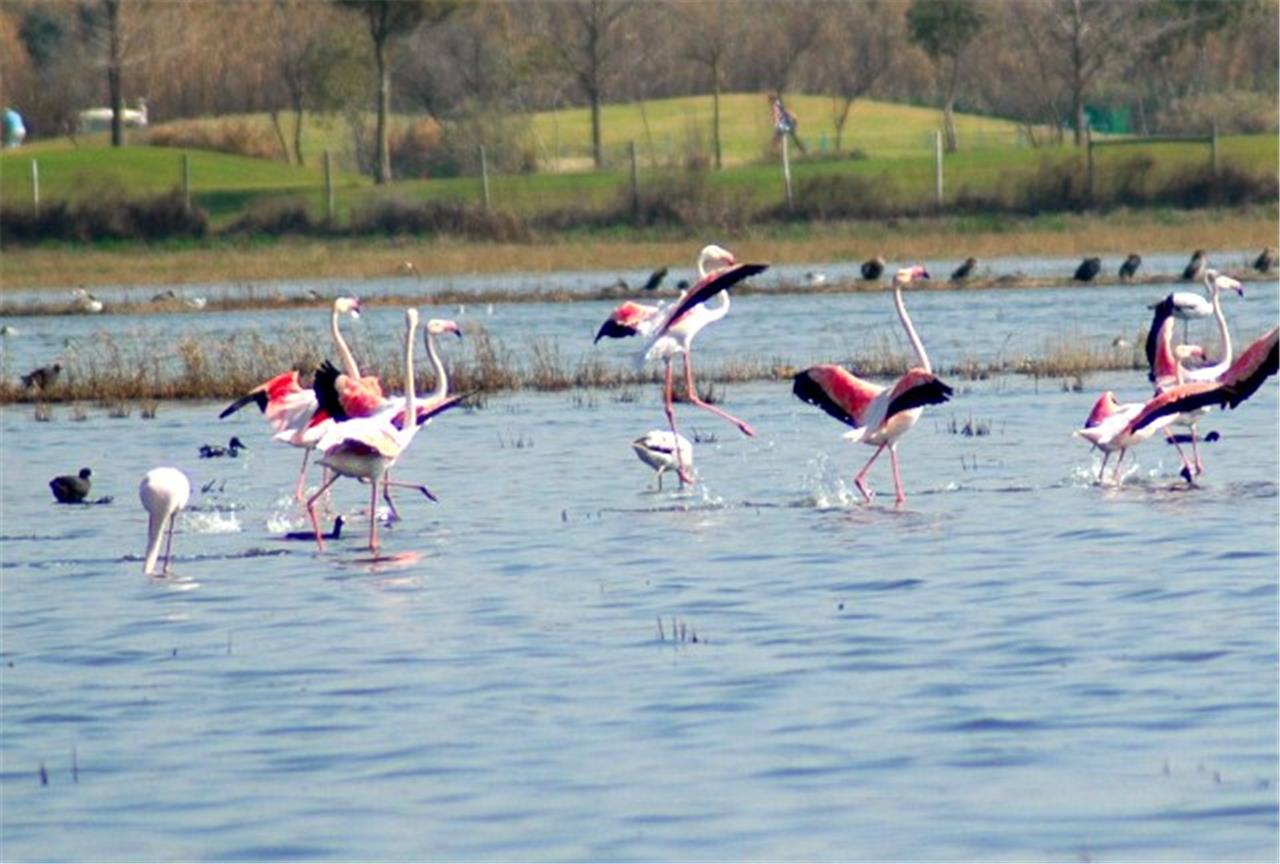
Proving that the Algarve has much more to offer than beaches, the Salgados Lagoon appears as an excellent alternative for those looking to spend a different day during the summer holidays. It is located between the municipalities of Silves and Albufeira and is classified as IBA - Important Bird and Biodiversity Area. It has characteristics that make possible the presence of a wide range of waders such as the Kentish plover or the flamingo. This lagoon is a paradise for birdwatching lovers, with more than 150 different species of birds being spotted per year. The richness of flora is also remarkable, making this place a great option for a quiet walk while enjoying the landscape.
Recommended

